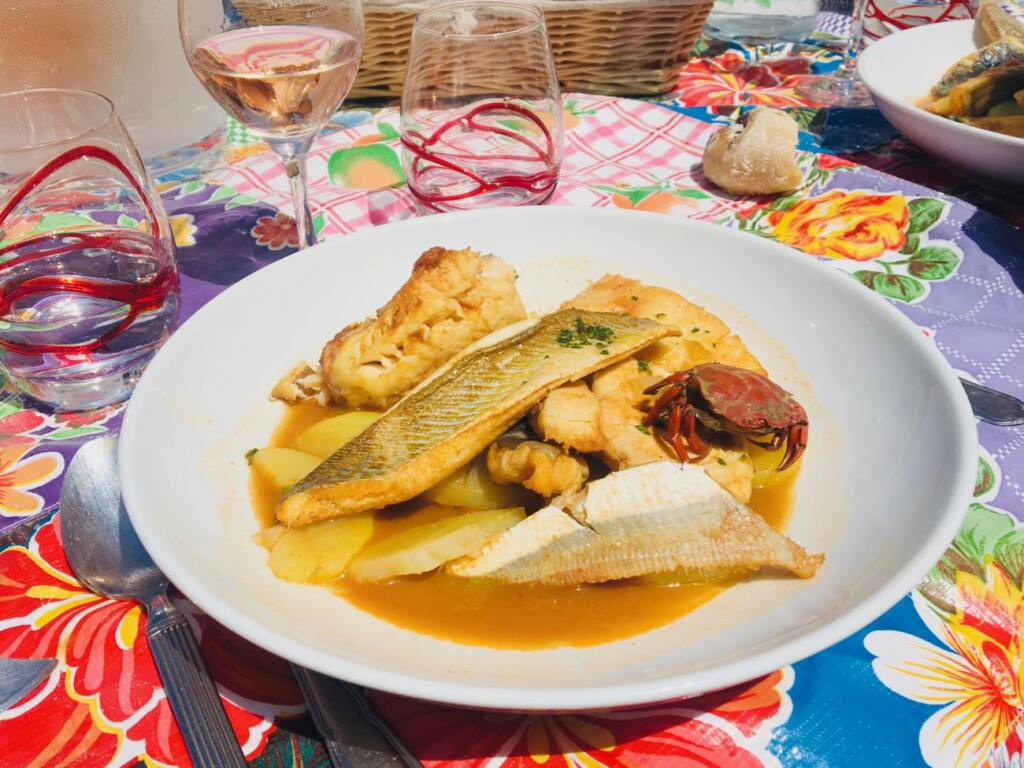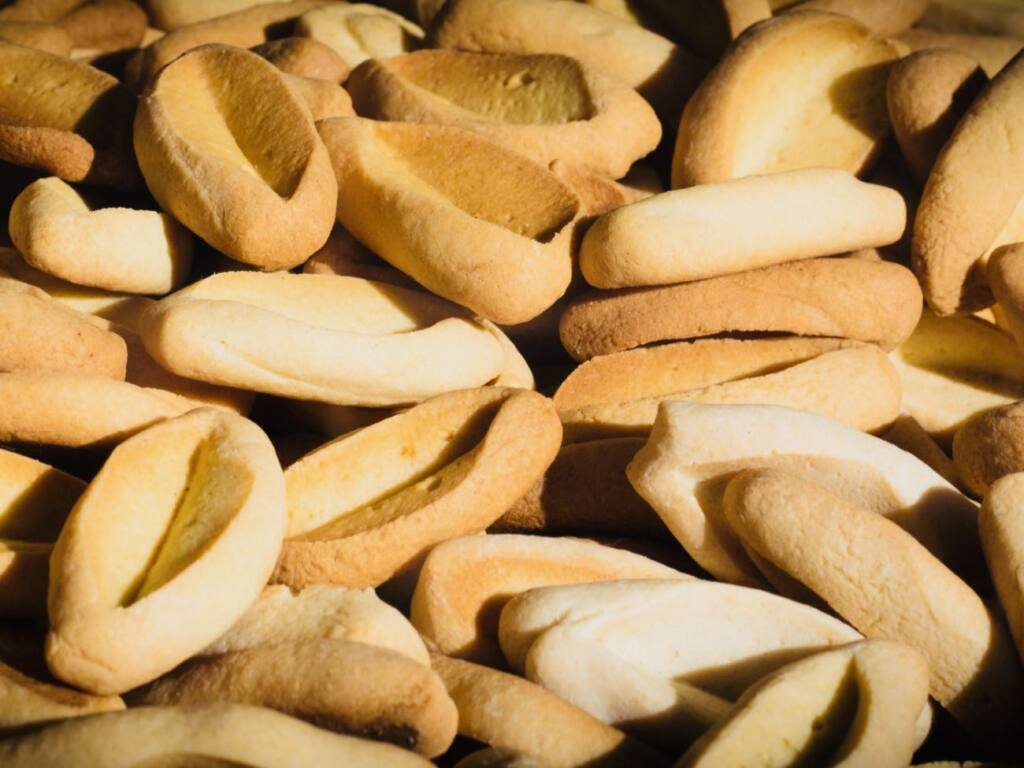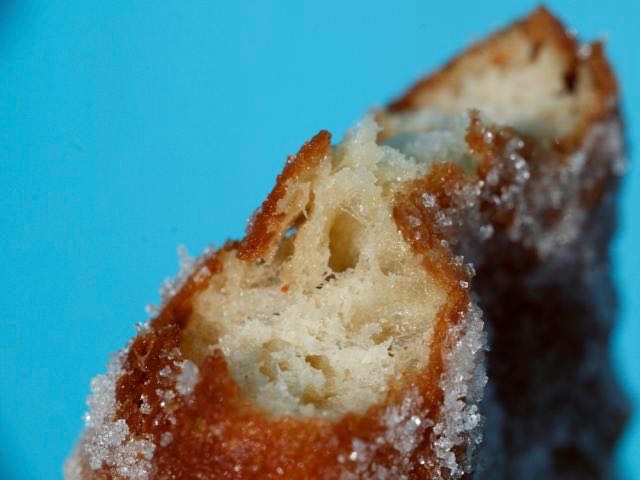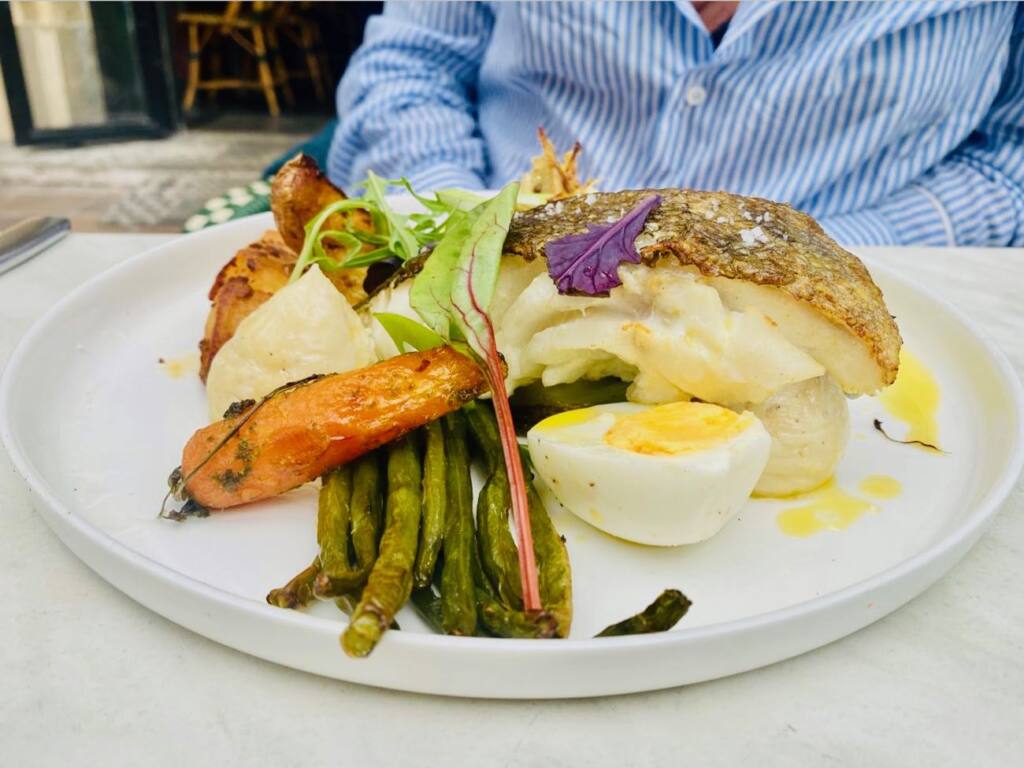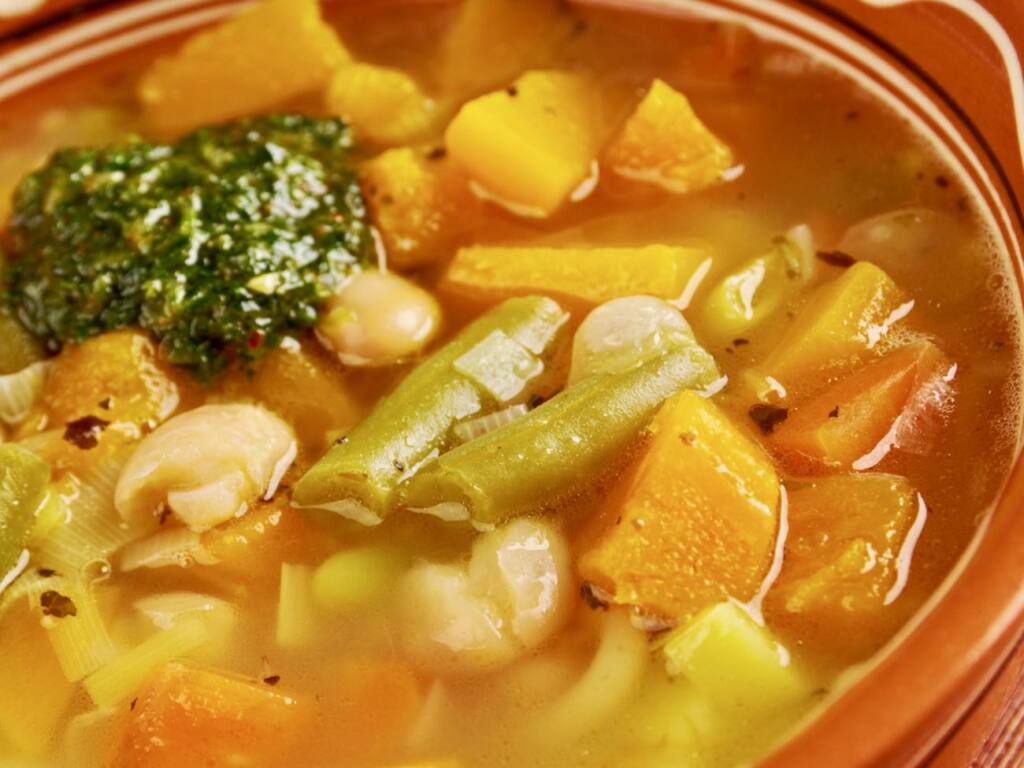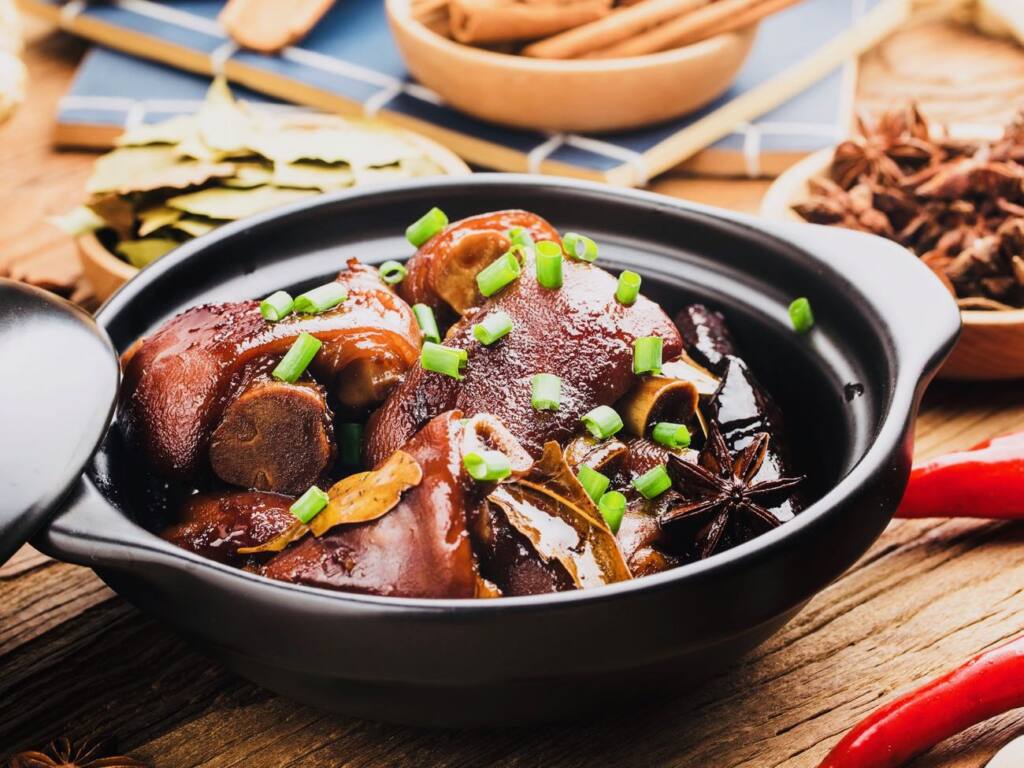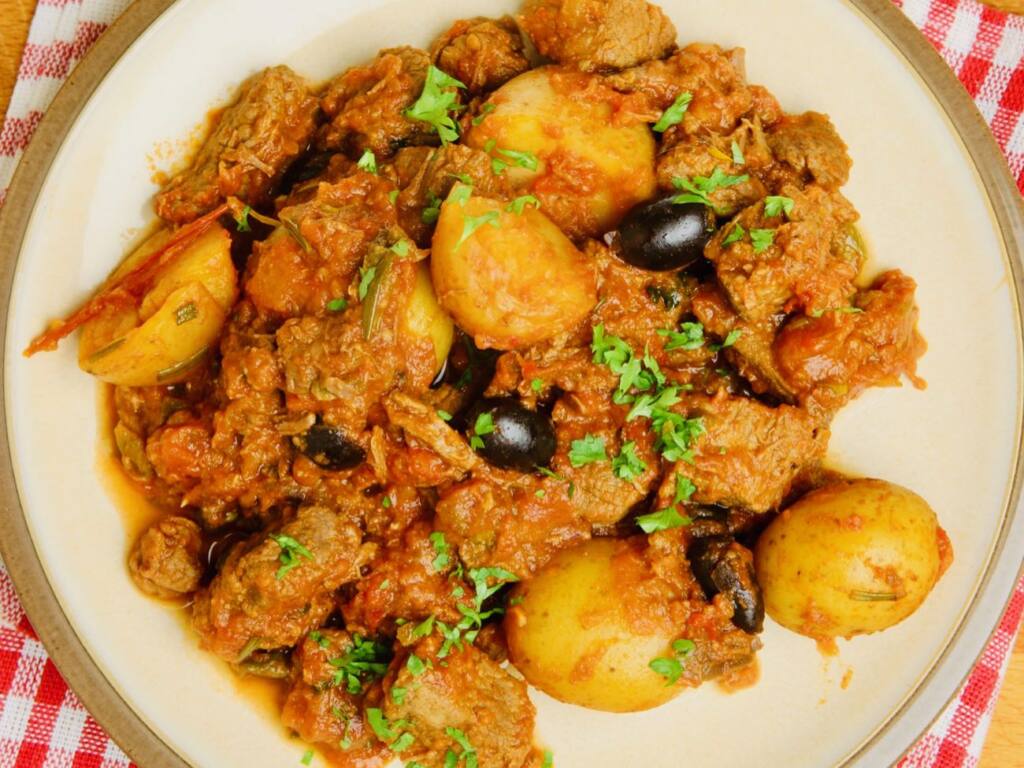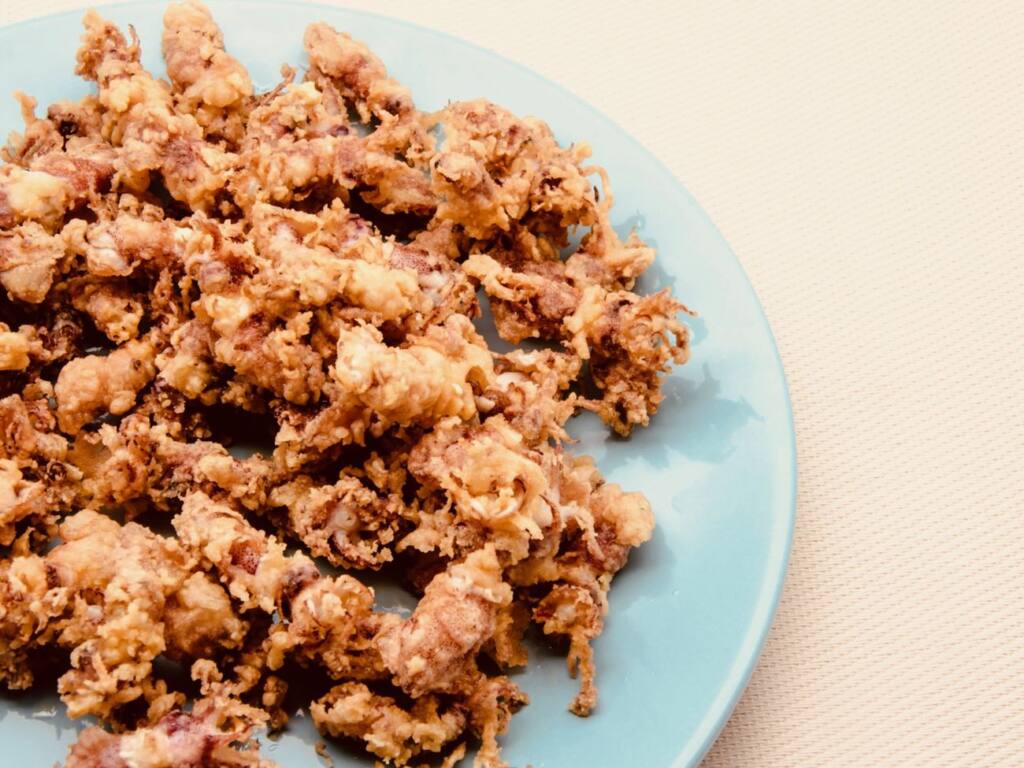Marseille no longer has to be ashamed of its gastronomy and the stars now shine on many of its restaurant tables. A new generation of chefs has taken over the neo-bistros where you can eat fresh, healthy and local food. Panisses, bouillabaisse, pistou soup, and aioli; we revisit the great classics of Marseille and Provençal gastronomy with taste and talent. Dinner time!
Les Panisses
Panisse is the star of Marseille aperitifs. The Italians from Piedmont who came to work in the Estaque tile works at the end of the 19th century brought this delicacy with them. Grazie Mille! These delicious little discs of chickpea flour that are fried and delicately sprinkled with salt and pepper. You can find panisses in sausage form in some neighbourhood grocery stores if you want to cut and cook them at home. But the real pleasure is to taste them as an aperitif. Many restaurants now offer them in fries with different flavours of homemade sauces to dip them in.
Some addresses to taste delicious panisses: Café de l’Abbaye, Fioupelan, Café Borély
La Bouillabaisse
It is the true star of local gastronomy. From a poor man’s dish – it was prepared with fish scraps sorted by fishermen for their families – it has become a culinary must to be prepared according to the rules of the art. It must include at least four different local fish, and the fish will be cut in front of you by specialists in the genre. With broth, garlic, onions, fennel, parsley, potatoes, tomatoes for accompaniment. It is served with rouille or aioli sauces accompanied by croutons rubbed with garlic. Because of its many fresh ingredients and its long preparation, bouillabaisse is a dish that is quite expensive (at least €50).
Some adresses for authentic bouillabaisse : Chez Michel, Fonfon, L’Esplai Grand Bar des Goude, le Miramar.
Les Navettes
Les Navettes are dry biscuits made with orange blossom essence that you will inevitably come across in Marseille. It is said that they were invented in 1781 in the Four des Navettes just next to the Abbey of Saint Victor by the baker Monsieur Aveyrous. Their shape and their name (“navis” meaning boat in Latin) would be a reference to the boat which transported the Saintes-Maries on the coasts of Provence. Every February 2 the Candlemas procession ends at the Four des Navettes with the blessing of the shuttles by the Archbishop of Marseille. That’s got you covered, right?
Some addresses to taste delicious Navettes: Le Four des navettes, Navettes des Accoules, Biscuiterie du Palais and many other bakeries in the region!
Les Chichis Frégis
Like panisses, chichi frigi were imported by Italian workers in the tile factories near Toulon and in L’Estaque in the 1900s. “Chichi” is derived from the Italian “cheche” which means chickpea whose flour is used to make them. “Fregis” for fried since they are cooked in oil. There are still 3 Chichis huts in L’Estaque where you have to queue to taste them plain, with sugar, chocolate or with homemade whipped cream. The “bada” is the little piece that remains of the dough when you cut it out and offer it to good customers or children. The word “Chichi” is also the nickname given in Provençal to the sex of the man… One wonders why 😉
Some addresses to taste delicious Chichis: Chez Freddy, Chez Magali, Lou Goustado de l’Estaco (3 cabins in the port of l’Estaque).
L’aïoli Marseillais
Aioli (“ail” garlic, “òli” oil) is this famous mayo made from garlic and olive oil. It will give your kisses a powerful taste 😉 It accompanies many dishes in the countries around the Mediterranean. Marseille aioli is a local specialty that is finds on many tables in Marseille. It goes well with a piece of white fish and whelks accompanied by seasonal vegetables such as carrots, potatoes, cauliflower, green beans, leeks and hard-boiled eggs. It is a popular dish that brings people together and that we like to share during large meals with family or friends.
Some addresses where you can taste aïoli : Bistrot Mimi and La roquette
La Soupe au Pistou
Contrary to what one might think, pistou soup is a summer dish and can also be eaten cold. It is made up of seasonal vegetables (green, red and white beans, tomatoes, etc.) and small pasta pieces, all enhanced in taste by the famous pesto (garlic, basil, olive oil). “Pistou” in Provençal means to grind and refers to the pestle used to crush the ingredients. It is a variant of Pesto. since this sauce comes from Genoa in Italy there are many versions of pistou soup depending on the restaurant or the family. In some soups small pieces of bacon or Italian sausage are added.
Some addresses to taste Pistou : Chérie épicerie, Regain, l’Idéal
Les Pieds Paquets
It is one of the rare tripe recipes of Marseille and its origin would be to be found in the la Pomme district of Marseille in 1880 thanks to the cook Louis Ginouvès. It now appears in all Provençal cookbooks. It always comes in the form of bundles of tripe and sheep’s feet, most often accompanied by boiled potatoes. The secret of this dish lies in the cooking time. As the saying goes – the longer it is, the better it is – which is particularly true for this marinated dish that is eaten hot.
Some addresses to taste delicious pieds paquets : Chez Madie les Galinettes
La Daube Provençale
This stew from Provence made of meat marinated in red wine is a must. It is most often prepared with beef but it is also prepared with bull in the Camargue, wild boar in the Var hinterland, lamb or mutton in Haute-Provence. In addition to very tender meat, olives and potatoes, the secret of a good stew lies in the good use of spices and herbs (cloves, thyme, bay leaf, parsley, celery and cade seeds) which will flavour it during its slow cooking.
Some addresses where you can taste daube provençale : La Poule Noire , le Café de la Banque
Les Supions
With garlic, fried, à la Provençal; there are a thousand ways to prepare squid, but whatever the preparation it always tastes good. The secret to its preparation lies in the cooking time. Squid should neither be too firm nor too rubbery. They are eaten fried as an aperitif, marinated in oil and spices as a starter, in a sauce in a dish with pasta or potatoes and even on pizzas, which gives the impression of a different ingredient each time.
Some addresses to eat delicious supions: Chez Etienne, L’Auberge du Corsaire ” Chez Paul ”




